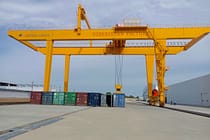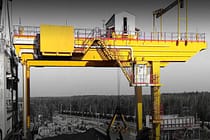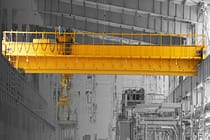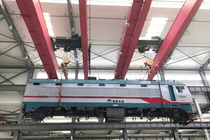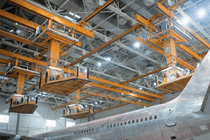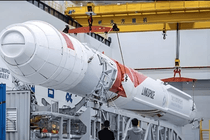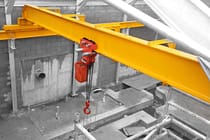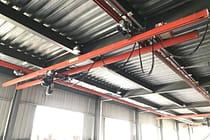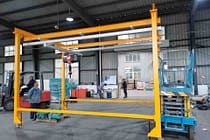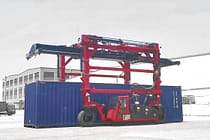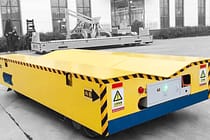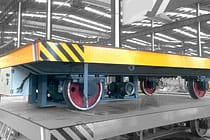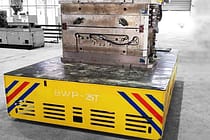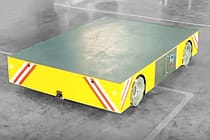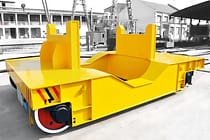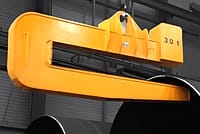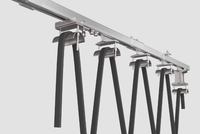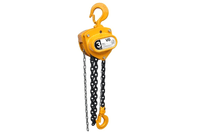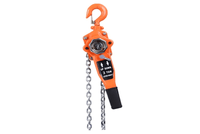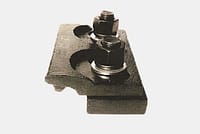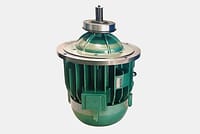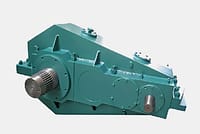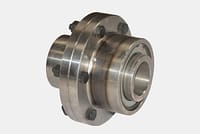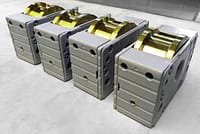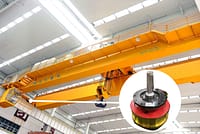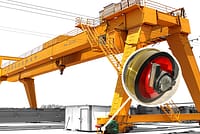Maintenance Tips To Extend The Lifespan Of Electric Gantry Cranes
Electric gantry cranes are essential equipment in various industrial settings, used for lifting and transporting heavy loads. Just like any other machinery, electric gantry cranes require periodic maintenance to ensure optimal performance and avoid breakdowns. Regular maintenance helps extend the lifespan of electric gantry cranes and prevent costly repairs or replacements. In this article, we’ll discuss some practical maintenance tips that can help you keep your electric gantry crane in top condition.
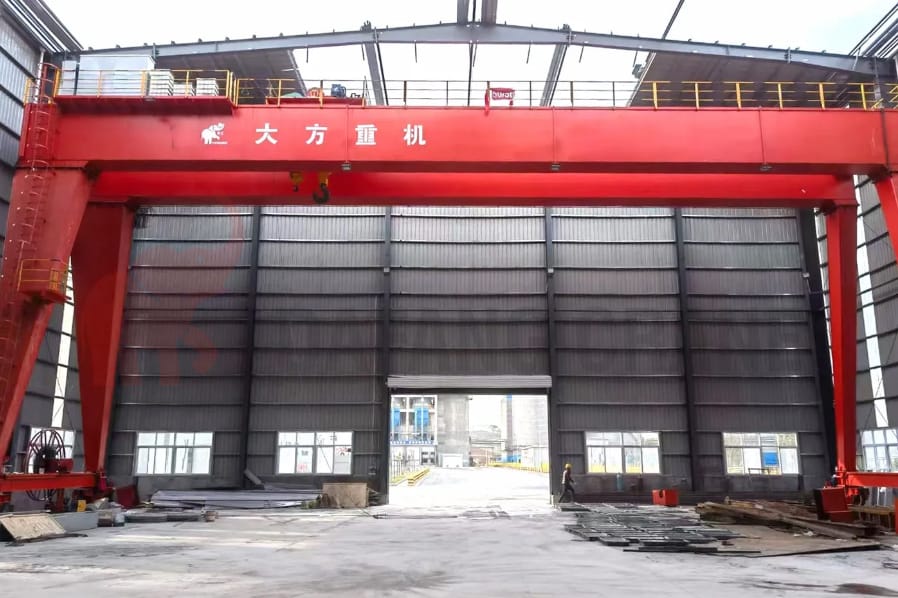
Importance Of Electric Gantry Crane Maintenance
The importance of electric gantry crane maintenance is mainly reflected in the following aspects:
Increases Equipment Lifespan
Another essential benefit of regular electric gantry crane maintenance is that it increases the lifespan of the machine. Routine inspections and repairs help identify worn or damaged components that can cause further damage if left unaddressed. By replacing these parts promptly, businesses can extend the life of their crane and avoid costly replacements or repairs in the future.
Ensures Operator Safety
Electric gantry cranes are powerful machines that can pose a safety hazard if not properly maintained. Regular maintenance helps ensure that the crane is operating safely and that all safety features are working correctly. This includes inspecting cables, checking brakes, and testing limit switches.
Reduces Operating Costs
Regular electric gantry crane maintenance can help businesses reduce operating costs. By identifying potential issues early on and addressing them promptly, businesses can avoid costly repairs and replacements down the line. Additionally, a well-maintained crane operates more efficiently, reducing energy costs and extending the lifespan of the machine.
How Often Should The Electric Gantry Crane Be Maintained
Regular maintenance is essential to keep electric gantry cranes running smoothly and ensure their safety. The frequency of maintenance largely depends on the intensity of use and the operating environment. For instance, a crane that operates in a dusty environment will require more frequent maintenance than one operating in a clean environment.
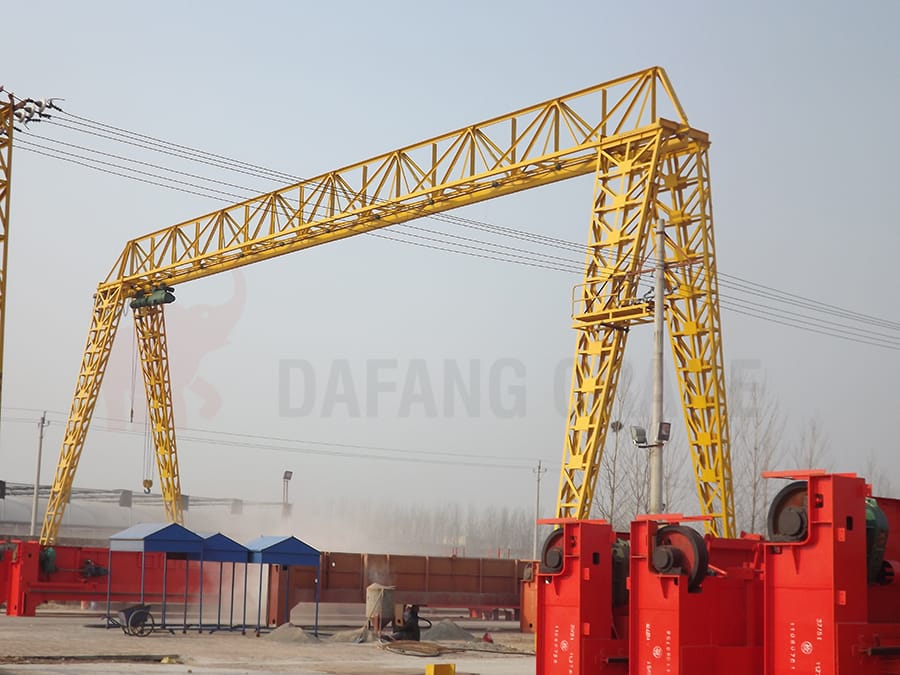
In general, electric gantry cranes should be inspected daily before use. This inspection includes checking the wire rope, hooks, and brakes for any visible signs of wear or damage. Any defects found during the inspection should be addressed immediately to avoid accidents or equipment damage.
Beyond daily inspections, electric gantry cranes require periodic maintenance. A thorough inspection and maintenance should be performed every six months by a qualified technician. During this inspection, the technician will check critical components such as the wire ropes, hoist motors, brakes, and structural components for any signs of wear or damage. Additionally, the technician will lubricate moving parts, replace worn-out components, and tighten loose bolts or nuts.
For some electric gantry cranes, the frequency of maintenance may need to be increased. For example, cranes that undergo intense use or operate under high temperatures may require more frequent maintenance than those that operate under normal conditions. Similarly, cranes that operate in harsh environments may require more frequent cleaning and inspection to prevent corrosion and rust.
Maintenance Tips Of Electric Gantry Cranes
Conduct Regular Inspections
One of the most important things you can do to maintain your crane is to conduct regular inspections. Inspections should be conducted daily before use and periodically by a qualified inspector. Daily inspections should include checking the hoist, trolley, runway, and controls, for signs of damage, wear, or corrosion, the crane’s electrical wiring, and connections for any loose or damaged wires. Periodic inspections should include a more thorough examination of all components of the crane, including the electrical system, and load-bearing components.
Lubricate Moving Parts
Electric gantry cranes have several moving parts that require lubrication to operate smoothly. These include bearings, gears, and chains. Lubrication helps reduce friction and wear on the components, preventing premature failure. It’s crucial to use the right type of lubricant and follow the manufacturer’s recommendations for frequency and amount of lubrication.

Clean the Crane
Cleaning the electric gantry crane is another critical maintenance task. Dirt, dust, and debris can accumulate on the machinery, causing damage or affecting performance. It’s essential to clean the crane regularly using a soft-bristled brush or compressed air to remove any buildup. The operator’s cabin should also be cleaned to ensure visibility and safety during operation.
Check Electrical Components
Electric gantry cranes rely on electrical components to operate. It’s crucial to check these components regularly for any signs of wear, corrosion, or damage. This includes checking the wires, connections, and control panels. Any issues should be addressed promptly to avoid potential safety hazards or equipment failure.
Train Operators Properly
Proper training of crane operators is essential for safe and efficient operation. All operators should receive comprehensive training on the specific type of electric gantry crane they will be operating, as well as on general safety procedures. Regular refresher training should be conducted to ensure that operators remain up-to-date on best practices.
Schedule Preventive Maintenance
Preventive maintenance involves scheduling regular maintenance tasks to prevent breakdowns and extend the lifespan of the electric gantry crane. This includes tasks such as lubrication, inspection, and cleaning, as well as more extensive maintenance tasks like component replacements. Preventive maintenance schedules should be based on the manufacturer’s recommendations and the crane’s usage.
Regular maintenance is essential for extending the lifespan of electric gantry cranes and ensuring optimal performance. By following the tips outlined in this article, you can keep your electric gantry crane in top condition and avoid costly repairs or replacements. Remember to conduct regular inspections, lubricate moving parts, clean the crane, check electrical components, perform load tests, train operators properly, and schedule preventive maintenance. With proper maintenance, your electric gantry crane can provide reliable and safe operation for years to come.
FAQs
- How often should I conduct a load test on my electric gantry crane?
Load tests should be conducted periodically, especially after significant repairs or modifications. The frequency of load tests depends on the crane’s usage and the manufacturer’s recommendations. - Can I use any type of lubricant on my electric gantry crane?
No. It’s crucial to use the right type of lubricant recommended by the manufacturer. Using the wrong lubricant can cause damage and affect performance. - What safety procedures should operators follow when operating an electric gantry crane?
Operators should follow all safety procedures outlined in the operator’s manual, including wearing appropriate personal protective equipment, avoiding overloading the crane and maintaining a safe distance from the load. - What is preventive maintenance?
Preventive maintenance involves identifying potential issues before they become major problems and addressing them proactively through regular inspections, lubrication, cleaning, and component replacement as needed. - How can I ensure that my electric gantry crane operates safely?
Regular maintenance and inspections, following safety procedures, and training operators in safe operation can help ensure that the crane operates safely.
Send Your Inquiry
- Email: sales@hndfcrane.com
- WhatsApp: +86 191 3738 6654
- Telegram: +86 191 3738 6654
- Tel: +86-373-581 8299
- Fax: +86-373-215 7000
- Add: Changnao Industrial District, Xinxiang City, Henan Province, China
 WeChat
WeChat








